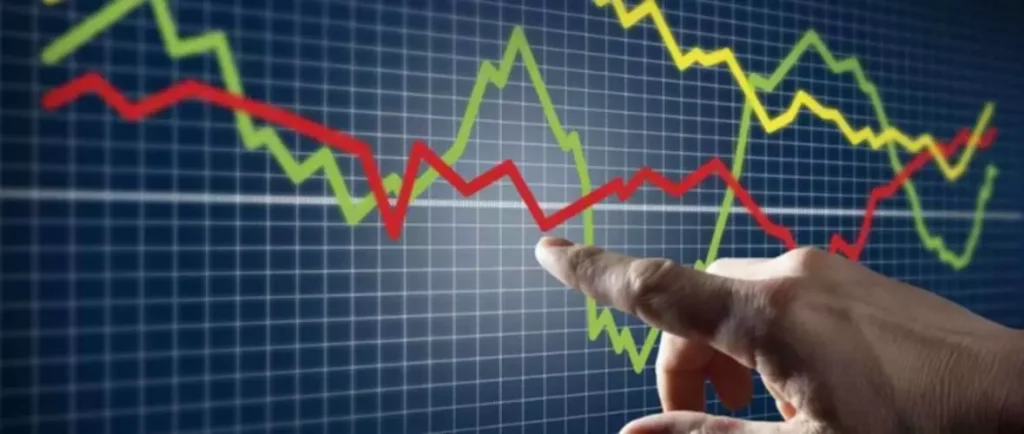Content
ZacksTrade does not endorse or adopt any particular investment strategy, any analyst opinion/rating/report or any approach to evaluating indiv idual securities. As we discussed, we do use the free ProRealTime scanners to search for stocks to day trade. However, you can always use the free Finviz scanner that will allow you to look for the three criteria we have seen before. We always can get back into the market later if the smart money buyers show up again. We’re a firm believer that you get the maximum bang for your buck when you trade side by side with smart money.
- After-hours trading refers to the buying and selling of stocks after the close of the U.S. stock exchanges at 4 p.m.
- Shortly, we will look at some real examples, but first you have to understand the story that volume tells you.
- The difference is important because if there are many trades happening but the dollar amount of those trades is small, then we will not get the follow through in price we were expecting.
- Conversely, if we break below a support level but we have positive readings on the CMF indicator that is a potential false signal.
- If a stock has a high volume, it’s more likely to be a long-term move, whereas a stock with a low volume is more likely to experience short-term moves.
- A doji is a trading session where a security’s open and close prices are virtually equal.
This could be a small-cap stock that popped or dropped on the news. Instead, look at the three-month average daily trading volume, which will give you a much better idea of whether the stock offers liquidity. For the price of a security to keep rising, an increasing number of buyers are needed, which would increase volume. When how to increase your brokerage trading volume a trader witnesses increasing price but decreasing volume, this is an indicator that the trend is running out of steam and it could be indicating the start of a price reversal. Futures, Options on Futures, Foreign Exchange and other leveraged products involves significant risk of loss and is not suitable for all investors.
Reading the raw trading volume in stock market
Any level of volume that provides investors with specific insight into a security’s price action can be thought of as a good trading volume. For example, suppose company ABC extended its uptrend for another five months and increased by 70% in six months. The investor sees that share prices of company ABC are still in an uptrend and continues to hold on to the shares.
Trading volume is just the tip of the iceberg when it comes to volume analysis. Capitulation is a dramatic surge of buying pressure in a rising market or selling pressure in a declining market. As the move accelerates, it will reach a point where traders unwilling to suffer https://xcritical.com/ further losses snowballs, leading to a surge in price as traders make a mass surrender. In the above example, price breaks out the range on higher than average volume, signaling new participants entering the market, increasing the odds the sell off will continue.
You can determine the daily trading volume on your own—all transactions are publicly available—by calculating the total amount of shares traded. The average trading volume on NYSE ranges between 2 and 6 billion shares. When we talk about the trading volume stock definition, we refer to the number of shares interchanged between traders or investors during a specific time. Average daily trading volume is the average number of shares traded each day in a given stock over a certain period. Volume is a handy tool to study trends, and as you can see, there are many ways to use it.
Trading Volume and Price Reversals
Basically, volume refers to the number of shares a stock has traded hands. In other words, it is a measure of how much a particular financial instrument has been traded within a given period of time. In the case of a pullback in a stock or market, the volume should be lower than it is when the price is moving in the direction of the trend, typically higher. Lower volume indicates that traders do not have much conviction in the pullback, and it may suggest that the market’s upward trend could continue, making the pullback a buying opportunity.
While you can still make money even in tight range markets, most trading strategies need that extra volume and volatility to work. Market makers active in low-volume stocks can use low liquidity to profit. They are aware that the stock’s low liquidity means they can take advantage of buyers who are eager to get in and out of the market.
Don’t get too hung up about the minimum volume for swing trading stocks
Certain Zacks Rank stocks for which no month-end price was available, pricing information was not collected, or for certain other reasons have been excluded from these return calculations. The higher the stock volume, the easier it is to buy and sell at a price we really want, avoiding the ask and bid spreads of the asset we are dealing with. We should always look for high trading volumes if we want to perform well in the market, especially if we are going to day trade. In this guide, we will be learning the definition of volume in stock market and everything we need to find and trade correctly with high volume stocks that move in any direction.
Currently there are 20 futures contracts and 8 commodity options available for trading on SHFE. Of course, you can always use your trading platform to scan for the best stocks with the best trading volume, but we still like to provide a free tool for everyone to work with. One of the main questions we should ask is what is a good volume for stocks to be able to trade properly and without a substantial bid-ask spread. So, let us jump now to see more specific metrics that will help you know which stocks to trade and which ones to avoid, attending only to the stock volume.
When closing prices are in the upper portion of the day’s range, and volume is expanding, values will be high. When closing prices are in the lower portion of the range, values will be negative. Chaikin Money Flow can be used as a short-term indicator because it oscillates, but it is more commonly used for seeing divergence.
If an investor owns 2,000 shares of XYZ and wants to do a covered call by selling 20 calls, they would enter a sale to open. Since it’s an opening transaction, it will add 20 to the open interest. If they later wanted to rebuy the 20 options, they would enter into a transaction to purchase to close. It’s helpful to familiarize yourself with different investment analysis strategies when building a portfolio. Technical analysis, for example, relies on pricing trends and trading movements while fundamental analysis looks more closely at a company’s fundamentals.
What Are Some Popular Volume Indicators?
In trend trades, volume should always be in favor of the direction of the trend. So if prices are trending higher, we would want to see higher volume on up moves. Therefore, it is quite easy to know the total number of shares that changed hands during a given period of time. The Klinger Oscillator is a technical indicator that combines prices movements with volume. The indicator uses divergence and crossovers to generate trade signals.
Volume traders will look for instances of increased buying or selling orders. They also pay attention to current price trends and potential price movements. Open Interest is a measure of how many total positions, short or long, are currently held in a market. – i.e., how much overall current interest is thereby traders in trading this market.
On the one hand, volume simply measures how much a given currency pair has traded over any given period of time. As a general rule, a strong trend should be accompanied by rising volume. At the same time, a sharp rise in volume can also signal the potential end of a trend. Increasing volume and price show more traders are willing to buy the stock while decreasing volume and increasing price show a lack of bullish sentiment, and possibly a potential reversal. Let’s dig deeper to find out how day traders can rely on volume to confirm chat patterns, breakouts, reversal trades, and trends.
Volume in stocks means the total number of shares traded on a specific stock exchange during a given timeframe. If a stock has a high volume, it’s more likely to be a long-term move, whereas a stock with a low volume is more likely to experience short-term moves. Trading volume is the total number of an asset that were traded during a given time period. It’s usually measured for exchange-traded assets, such as stocks, bonds, options, futures and commodities. Trading volume doesn’t just indicate how many transactions are occurring, but also includes the total amount of an asset that was bought or sold during the transaction. The definition of a good day trading volume is the number of shares traded on a single day.
Exhaustion Moves and Volume
Basically, the indicator uses two exponentially weighted moving averages of the accumulation/distribution line. The accumulation/distribution line is similar to the one used by the MACD indicator. The money flow index shows the money flow and is calculated in a few steps. Volume AND open interest both decreasing favors lower prices or upcoming trend reversal. Volume AND open interest both increasing favors higher prices or current trend continuation. Tick Volume is the total number of transactions that has taken place not the dollar amount.
Here, the red and black bars at the bottom of the chart represent the trading volume for each day shown. Trading volume matters because it represents investor interest in a company. It can also illustrate momentum, which happens when stocks, assets, or sectors are trending higher—and perhaps just as importantly, volume can also help to indicate when a trend is ending.
Example of volume of trade
Picking a well-timed entry can greatly help to minimize your risk. Above is a great example of a breakout trade with volume confirmation. Tesla was consolidating in a pennant formation where a defined support and resistance line were tightening over time. There are numerous advantages of using volume to day trade various financial instruments. This rule is in place to stop companies from buying all the stock available for sale to juice the stock price. Using average volume as one of several data points for investing decisions was popularized, in part, by William O’Neil’s How To Make Money In Stocks.
What is a good timeframe for trading?
That’s because traders are responding to the news by either buying or selling the company’s shares. Joe buys 250 shares of stock ABC and sells 250 shares of stock XYZ. Sarah buys the 250 shares of XYZ and sells 500 shares of stock DEF to Joe. Most traders find it useful to add a simple moving average to the volume indicator to easily spot higher than average volume as seen below.
My Account
Daily volume is how many shares are traded each day, but this can be averaged over a number of days to find the average daily volume. Again, we have represented the same chart, but in this case, we have added the simple moving average in the trading volume indicator. In this particular case, we are representing the average daily trading volume with the yellow line on the stock volume indicator. Suppose that you purchased 10,000 shares of a company at $10 per share one year ago, and then the price rose to $13. If the average daily trading volume of this stock is only 100 shares, it will take time to sell 10,000 at the market price. Daily volume is the most common time frame used when discussing stock volume.






Deja tu comentario